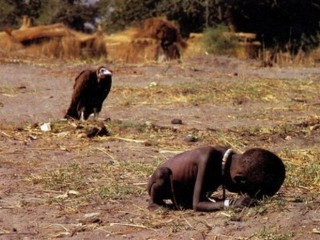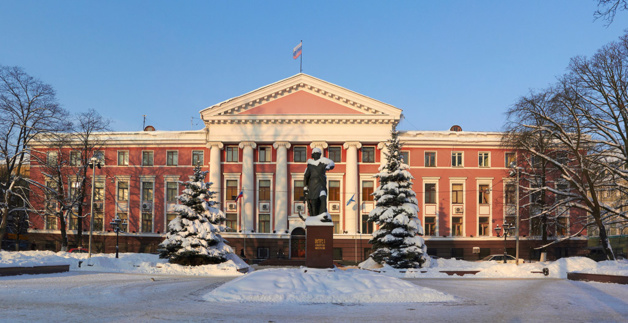Sortir du sous-développement implique une poussée migratoire et non un reflux
Par Loup Viallet et à retrouver sur le site : https://questionsafricaines.wordpress.com/

Il semble admis pour beaucoup d’économistes et de décideurs que le développement économique a pour conséquence la réduction des flux migratoires. A la suite de nombreux travaux, Hein de Haas, professeur de Sociologie à l’Université d’Amsterdam et ancien directeur de l’Institut des Migrations Internationales de l’Université d’Oxford, exprime une autre idée de la dynamique entre migration et développement dans son article « Migration and development, A theoretical perspective » (2008). En réalité, il apparaît que le passage du sous-développement au développement s’accompagne d’une poussée migratoire (« the migration hump ») dont la durée peut se prolonger si les opportunités créées dans les pays en développement demeurent insuffisantes pour leurs populations actives.
Nous restituons ici dans sa version originale le titre 3.2 « The migration hump » issu du chapitre 3 « Towards a transitional migration theory » de « Migration and development, A theoretical perspective » (2008).
3.2. The migration hump* (* traduction française « la poussée migratoire »)
What has remained unobserved so far is that migration economists have – apparently unintentionally – provided additional economic evidence for and further refinement of the transitional migration perspective by uncovering the anatomy of the “migration hump”. Martin (1993) and Martin and Taylor (1996) argued that a temporary increase in migration – a migration hump – has been a usual part of the process of economic development. In the early stages of development, an increase in wealth tends to lead to a rise in migration, since a certain threshold of wealth is necessary to enable people to assume the costs and risks of migrating. With increasing wealth and the establishment of migrant networks, an increasing proportion of the population is able to migrate, selectivity of migration tends to decrease, and this process of “development” initially tends to lead to an increasing diffusion of migration across communities.
Only at later stages of development, does emigration tend to decrease and do regions and countries tend to transform from net labour exporters to net labour importers (cf. Bohning 1994:196; Martin 1992:471; Martin & Taylor 1996; Olesen 2002:141; Rotte et al 1997). This has happened in recent decades with countries as diverse as Spain, Italy, Greece, Ireland, Malaysia, Taiwan and South Korea, which used to be located on global “labour frontiers”, which have shifted further on since then.
Economic development and decreasing income differentials with destination countries therefore tend to have a J-curve or inverted U-curve effect on emigration, steeply increasing in the initial phases of economic development and only later gradually decreasing (Martin & Taylor 1996). This “migration hump” seems to reflect rather adequately past (Massey 1991) and contemporary (Olesen 2002:141) global migration patterns and shows a striking degree of correspondence with Zelinsky’s and Skeldon’s models. In many ways, Zelinsky’s model can be seen as a migration hump avant la lettre. This appears to be another ground for rejecting relativist claims that no general inferences whatsoever can be made about the historical, spatio-temporal evolution of migration in direct or indirect relation to broader development processes. In fact, Zelinsky’s, Skeldon’s and Martin and Taylor’s approaches can be integrated into one single, spatio-temporal ‘transitional’ migration perspective, which recognises the complex, non-linear interlinkages between the occurrence of various forms of migration and general social, technological, economic and demographic transformation processes embodied in the term “development”.
Thus, it is possible to incorporate the criticism on Zelinksy’s original theoretical perspective without rejecting it but by modifying it, provided that some conditions are met (De Haas 2007a). First, such a modified model should allow for historical-regional, time-spatial variations viewed as a variety of patterns within a general system. Second, a realistic ‘transitional’ perspective on migration should perceive the relation between development and the occurrence of specific types of migration as an indirect and probabilistic rather than as a direct and deterministic one. Moreover, this relation is not unidirectional, because a decreasing relative development level may also transform an immigration country into an emigration country. In the end, it is the level of development relative to other places and countries that determines migration propensities. As we will see, this fits into the idea (particularly advanced by the new economics of labour migration) that relative, not absolute, deprivation is one of the main determinants of migration.
Third, a final necessary modification to this transitional migration perspective seems to broaden our view of ‘development’ beyond a narrow focus on economic and demographic variables. The migration-development nexus also comprises important social and cultural dimensions. Besides rising incomes and improved transportation and communication infrastructure, also factors like education and access to information and social capital initially tend to increase people’s aspirations and abilities to migrate (De Haas 2005).
Therefore, it is necessary to conceive ‘development’ as the more general increase of people’s capabilities. Such a more comprehensive approach to development is offered by Amartya Sen (1999), who conceives development as “the process of expanding the substantive freedoms that people enjoy”. In order to operationalize these ‘freedoms’, he applies the concept of human capability, which relates to the ability of human beings to lead lives they have reason to value and to enhance the substantive choices they have – including the option to migrate as a strategy to achieve livelihood improvements. Sen’s capabilities approach contrasts with narrower views of development that are largely restricted to income indicators.
To summarise, the fundamental idea is that socio-economic development tends to increase people’s capabilities and aspirations to migrate. However, while the effect of development on capabilities to migrate is more or less linear, the effect on people’s aspirations to migrate is is more likely to resemble a J or inverted U-curve as a consequence of decreasing levels of relative deprivation.
(…) Within an integrated transitional migration perspective, ‘development’ in its broader sense is initially likely to increase people’s propensity to migrate, first predominantly internally and in later development stages increasingly internationally. On the longer run, decreasing spatial (internal and international) opportunity gaps might decrease people’s incentives to migrate, which is likely to result in a slow-down in both rural-to-urban and international out-migration but, most importantly, in an increasing diversification of migration patterns, along with increasing importance of immigration, rather than a decrease in mobility as such.
Source :
- « Migration and development, A theoretical perspective », Hein de Haas, International Migration Institute, University of Oxford, 2008.
- Lien vers l’article dans son intégralité : https://www.imi-n.org/publications/wp-09-08
Sources citées dans l’extrait :
- Martin PL, Taylor JE. 1996. The anatomy of a migration hump. In Development strategy,, employment, and migration: Insights from models, ed. JEe Taylor, pp. 43-62. Paris: OECD, Development Centre
- Olesen H. 2002. Migration, return, and development: An institutional perspective. International Migration 40:125-50
- Rotte R, Vogler M, Zimmermann KF. 1997. South-North refugee migration: Lessons for development cooperation. Journal of Development Economics 1:99-115




